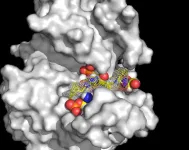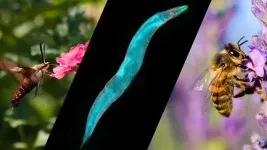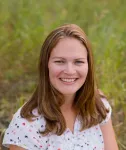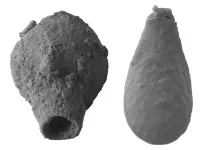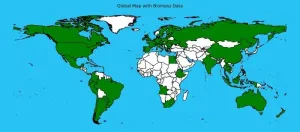(Press-News.org) Canadian vaccination programs could switch to a 1-dose gender-neutral human papillomavirus (HPV) vaccination approach and eliminate cervical cancer, suggests new modelling in CMAJ (Canadian Medical Association Journal) https://www.cmaj.ca/lookup/doi/10.1503/cmaj.240787.
“Our results have important policy implications in Canada, and in other similar high-income countries evaluating whether to switch to 1-dose HPV vaccination,” writes Dr. Marc Brisson, a full professor at Laval University, Québec, and director of the Mathematical Modeling and Health Economics of Infectious Diseases Lab at the Centre de recherche du CHU de Québec–Université Laval.
Countries around the world are looking at whether to move from a 2-dose to 1-dose HPV vaccination approach after a 2022 recommendation by the World Health Organization Strategic Advisory Group of Experts on Immunization based on clinical trial evidence. Human papillomavirus can cause cervical cancer and other diseases.
Researchers in Ontario and Quebec modelled various scenarios based on 1- and 2-dose approaches to inform recommendations from the Canadian National Advisory Committee on Immunization and the Comité sur l’immunisation du Québec.
The group found that 1-dose gender-neutral vaccination could prevent a similar number of cervical cancers as 2 doses, if vaccine protection remains high during ages of peak sexual activity. “[A]ll 1-dose vaccination scenarios, even the most pessimistic, were projected to be a substantially more efficient use of vaccine doses than 2-dose vaccination; these scenarios were also all projected to lead to elimination of cervical cancer in Canada between 2032 and 2040,” write the authors.
This approach is a more efficient use of vaccine doses and is projected to help eliminate cervical cancer in Canada.
“The COVID-19 pandemic impacted HPV vaccination in Canada, particularly among vulnerable population subgroups. The potential economic savings by switching to 1-dose vaccination, and its programmatic flexibility, could allow investments to increase vaccination uptake in regions where coverage is suboptimal and in high HPV burden subgroups to mitigate the pandemic’s impact on programs and to reduce inequalities,” said Dr. Chantal Sauvageau, specialist in community health and consultant in infectious diseases at the National Institute of Public Health in the province of Quebec.
Regular monitoring of 1-dose protection is advised to detect signs of waning protection.
END
HPV vaccination switch to 1-dose gender-neutral approach
2024-10-07
ELSE PRESS RELEASES FROM THIS DATE:
Scurvy: Not just an 18th-century sailors’ disease
2024-10-07
Scurvy, or vitamin C deficiency, is not just an 18th-century seafarers’ disease, as a case study of a 65-year-old woman with mobility issues and social isolation shows. In an article published in CMAJ (Canadian Medical Association Journal) https://www.cmaj.ca/lookup/doi/10.1503/cmaj.240769, clinicians describe how scurvy should be considered in patients with abnormal bleeding and nonspecific symptoms.
The patient visited the emergency department at a downtown Toronto hospital for leg pain and weakness, skin lesions, and discoloration. She also had several chronic health ...
Scientists discover a secret to regulating our body clock, offering new approach to end jet lag
2024-10-07
Singapore, 7 October 2024—Scientists from Duke-NUS Medical School and the University of California, Santa Cruz, have discovered the secret to regulating our internal clock. They identified that this regulator sits right at the tail end of Casein Kinase 1 delta (CK1δ), a protein which acts as a pace setter for our internal biological clock or the natural 24-hour cycles that control sleep-wake patterns and other daily functions, known as circadian rhythm.
Published in the journal PNAS, their findings could ...
Impact of pollutants on pollinators, and how neural circuits adapt to temperature changes
2024-10-04
The Kavli Foundation and the U.S. National Science Foundation are collaborating to accelerate research in the emerging field of neurobiology in changing ecosystems, stemming from the foundation’s efforts in this area first announced in 2023. A joint Kavli-NSF grantmaking program was launched in December of 2023.
Building on early success of this program, Kavli and NSF announce its continuation with a second call for proposals, open through February 10, 2025, for projects tackling hard problems in this understudied field.
Research ...
Researchers seek to improve advanced pain management using AI for drug discovery
2024-10-04
An estimated one in five Americans live with chronic pain and current treatment options leave much to be desired. Feixiong Cheng, PhD, Director of Cleveland Clinic’s Genome Center, and IBM are using artificial intelligence (AI) for drug discovery in advanced pain management. The team’s deep-learning framework identified multiple gut microbiome-derived metabolites and FDA-approved drugs that can be repurposed to select non-addictive, non-opioid options to treat chronic pain.
The findings, published in Cell Press, represent one of many ways the organizations' Discovery Accelerator partnership is helping ...
‘Neutron Nexus’ brings universities, ORNL together to advance science
2024-10-04
Oak Ridge National Laboratory has launched its Neutron Nexus pilot program with Florida Agricultural & Mechanical University, or FAMU, and Florida State University, or FSU, through the FAMU-FSU College of Engineering. The first program of its kind nationwide, it’s aimed at broadening and diversifying the scientific user community with outreach to universities and colleges to increase collaboration and, ultimately, scientific advancement.
Although a recently planned two-day “ORNL Days” event in Florida was cut ...
Early release from NEJM Evidence
2024-10-04
This article was published Early Release to coincide with a presentation at the Symposium on Advanced Wound Care in Las Vegas, NV.
Full text is now available on evidence.nejm.org. Email mediarelations@nejm.org for access.
Original Article: Intact Fish Skin Graft to Treat Deep Diabetic Foot Ulcers
Dured Dardari, M.D, Ph.D., From the Diabetology Department, Center Hopitalier Sud Francilien, Corbeil-Essonnes, France, and the LBEPS, Université d’Evry, IRBA, Université Paris Saclay, 91025 Evry, France.
If you have any questions for our office, please contact our Media Relations ...
UMass Amherst astronomer leads science team helping to develop billion-dollar NASA satellite mission concept
2024-10-04
October 4, 2024
UMass Amherst Astronomer Leads Science Team Helping to Develop Billion-Dollar NASA Satellite Mission Concept
Alexandra Pope, science lead for the PRIMA space telescope, is on team developing next-generation space probe that will explore evolution of the universe
AMHERST, Mass. – A University of Massachusetts astronomy professor is science lead on a $5 million proposal selected by NASA to develop new space satellite missions that bridge gaps in our understanding of the evolution of ...
Cultivating global engagement in bioengineering education to train students skills in biomedical device design and innovation
2024-10-04
International collaboration between the Bioengineering Department at Clemson University, South Carolina and Arusha Technical College in Tanzania will further enhance development of a workforce skilled in biomedical device design and innovation. A recent National Science Foundation grant awarded to Dr. Melinda Harman, an Associate Professor at Clemson, along with her team of collaborators will develop innovative approaches to problem-based learning in bioengineering while fostering breakthroughs that address global health ...
Life on Earth was more diverse than classical theory suggests 800 million years ago, a Brazilian study shows
2024-10-04
About 800 million years ago (mya), before the supercontinent Pangea formed, the Earth was more diverse than classical theory suggests. By reconstructing the tree of life from the evolutionary history of amoebas and the ancestors of algae, fungi, plants and animals, Brazilian researchers have created a scenario in which several different lineages of many species inhabited the planet during the period. An article reporting their findings is published in Proceedings of the National Academy of Sciences of the United States of America (PNAS).
According to the literature, several lineages of eukaryotes that first emerged 1.5 billion years ago diversified and ...
International clean energy initiative launches global biomass resource assessment
2024-10-04
A multi-country, government-led initiative dedicated to advancing the global transition to a sustainable, bio-based economy, unveiled a new Global Biomass Resource Assessment, providing groundbreaking data on current and future sustainable biomass supplies around the world.
The results from this new global sustainable supply assessment will allow scientists, policymakers, and industry leaders to explore potential sources of biomass as a foundation for a circular and sustainable global bioeconomy, supporting ...
